Nurturing the Next Generation – GreenGrads Signposts Innovations for Environmental Success
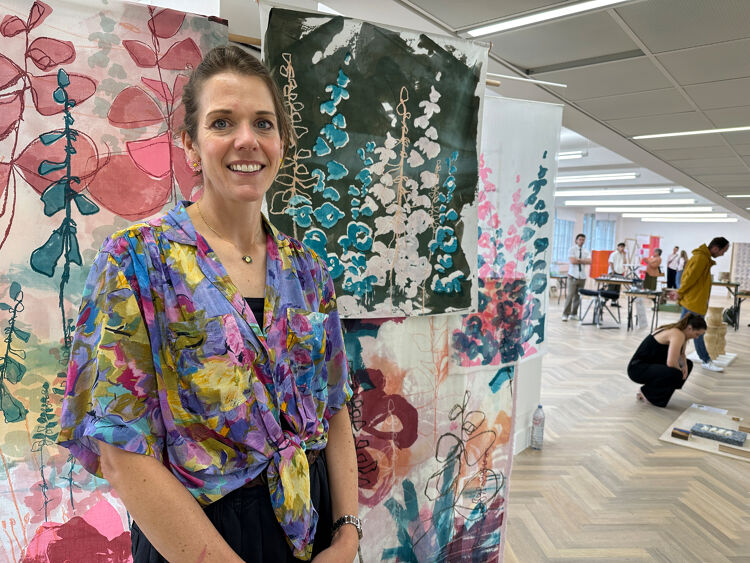
Green Grads Hub ran for the third consecutive year which showcased emerging talents from the UK and focused on environmental balance and sustainability.
Nurturing the next generation, the Green Grads Hub was held at Heals, London in mid-September 2023. This was the third year for a project that relies solely on the generous donations of the industry. Professionals involved take no fees and minimal expenses.
Sponsors this year included amongst others; Designers Guild, Anglepoise, FESPA, Epson, Chelsea Design Centre, Heals, Ercol, Neptune, ImageCo and Benchmark. The project runs consistently throughout the year, holding pop-up workshops and events. And in doing so showcases talent whilst also facilitating networking opportunities alongside commercial partnerships for graduates.
The platform was founded by Barbara Chandler and Michael Czerwinski, with support from FESPA Textile Ambassador Debbie McKeegan who joined as consultant for Textile Design, Technology and Sustainability.
Green Grads celebrates emerging talent from across the country and focusses on environmental balance and sustainability. Championing innovation, new ideas and concepts that encourage and deliver environmental change. Green Grads 2023 brought together a cohort of 55+ new UK graduates, across multiple product disciplines, with ideas to heal the planet over three days in the beautifully refurbished third floor of the Heal’s Building, where GREEN GRADS installed a theatre for a series of engrossing events which included awards, speeches and discussion.
This year’s the ECO STORIES, Epson Design Challenge, for pattern/cloths that nurture the environment was won by the talented graduate Becky Brentnall and her “The Garden That Inspired” printed textile collection, winning a cash prize of £350.
Becky’s childhood garden inspired in her a lifelong passion for nature and in particular for flowers grown in the UK. This now finds expression in dramatically large-scale textiles, up to four metres in length. These are hand-painted and screen-printed onto natural fabrics using manutex, a seaweed-based thickener that makes reactive dyes into a print or paint paste. Before returning to studies, Becky trained and worked as a landscape gardener and a florist.
“My work celebrates and promotes nature on a large scale, and I want it to enrich home and business interiors.” Becky commented.
BA Surface Pattern and Textile Design, Staffordshire University @becky_designs.uk
Becky’s final collection celebrates nature and her love of print. As a mature student she now seeks a career in design and print and is looking to expand her design practice to found her own studio alongside building her own brand using digital printing technologies to replicate her original works as Interior décor products and accessories.
Joint winner of the ECO STORIES, Epson Design Challenge, for pattern/cloths that nurture the environment with a generous prize of an Epson F100 printer was Zaynah Arif Lepidoptera.
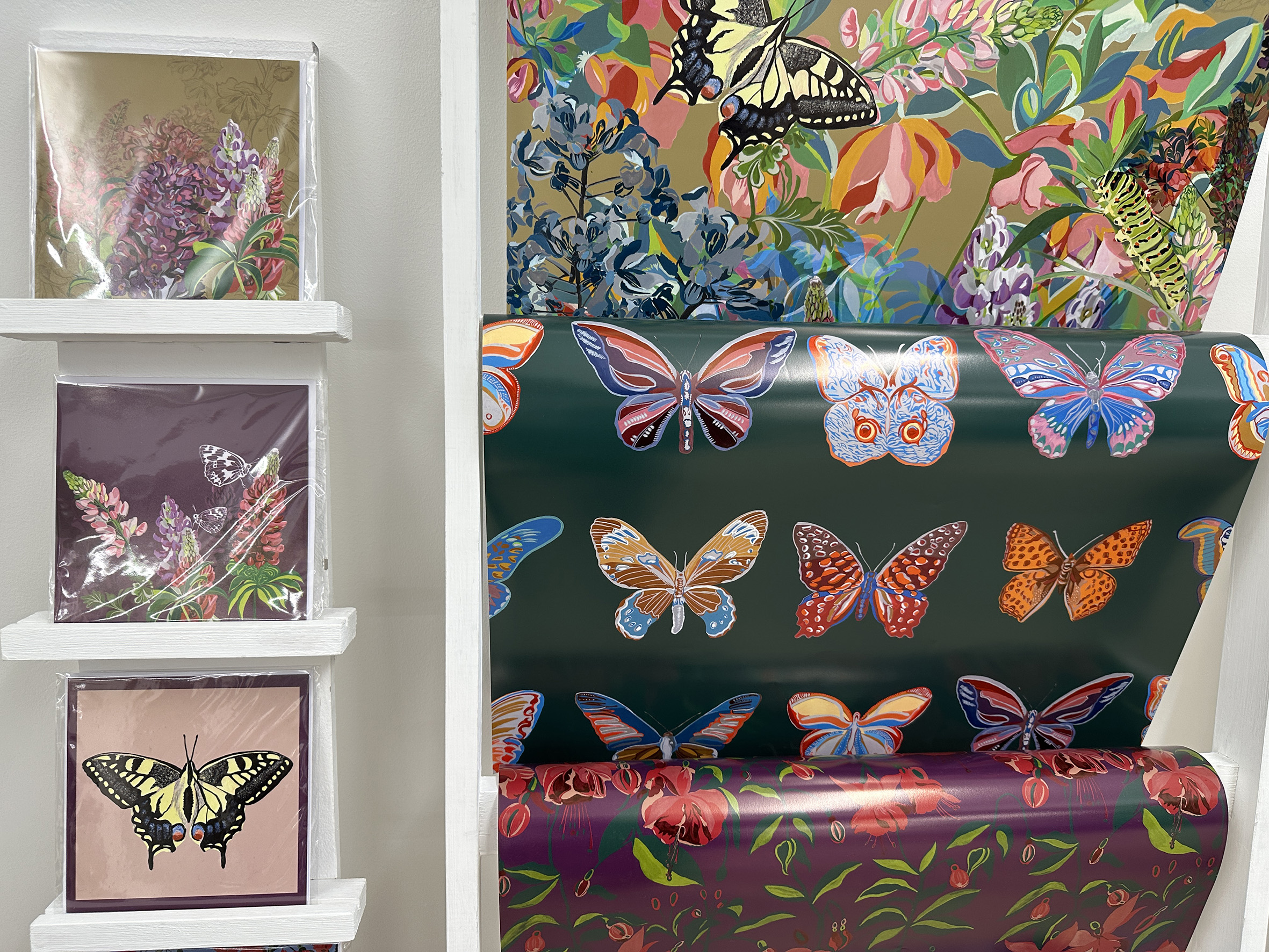 Zayna’s beautiful hand-painted artwork carries a strong message
Zayna’s beautiful hand-painted artwork carries a strong message
Zayna’s beautiful hand-painted artwork carries a strong message. With numbers of butterflies and moths declining, Zayna is adorning stationery, coordinating wrapping paper and giftware, together with unique reversible appliqué bags, with images that call attention to their plight.
“We must campaign to save all the pollinators in the same way as we have campaigned to save the bees.” Zayna stated.
Zayna explained how she would love to create a collection in aid of Butterfly Conservation, gifting them all the proceeds. In the meantime, her drawing and painting continues and with a gifted Epson F100 printer we look forward to watching her brand blossom in tune with her environmental objectives.
BA Textiles and Surface Design, University of Bolton @zaynaharif_designs
Also worthy of note and perhaps as a nod to the future of textile ink innovations were Annelise Payne and Chloe Benham.
Annelise Payne Winner of the Textile Innovation Award: “Primordial Pigments”
Enthused by the Arts & Crafts movement, Annelise sourced bacteria from soil and water around the original William Morris textile workshop in Merton Mills and developed a “fully microbial” colour palette.
She then traditionally block-printed a Morris-inspired design onto fabric but replaced conventional dyes with pigment-producing bacteria.
“This process gives equal agency to living organisms, letting the bacteria grow and develop over time to reveal colours and patterns on the fabric.” She adds: “William Morris took inspiration from the many floras and fauna that surrounded him. He advocated for the preservation of traditional craft practices and the use of natural materials in defiance of the Industrial Revolution (in 2023 we equally reject mass manufacture in favour of on-demand manufacturing). “I’m taking his ideas into the 21st century.
Bacterial pigments grow independent of season, need no chemicals or land, and very little water. They could provide a more regenerative solution to colour and dye within the textile industry” Annalise explained.
Previous projects by this designer, who comes from Salt Lake City, Utah, focused on kelp, mycelium and wool.
MA Material Futures, Central Saint Martins, UAL @annelisepayne
Chloe Benham presented “Microbial Hues”
Chloe has explored ways in which “living” colour systems using bacteria could provide a circular alternative to petrochemical dyes. Concentrating on the aesthetics, she successfully developed a new printing technique mixing bacteria and plant dyes. “We have a responsibility as designers to challenge the norm.”
MA Textiles, Royal College of Art @chloebenham
 “We have a responsibility as designers to challenge the norm.” MA Textiles, Royal College of Art @chloebenham
“We have a responsibility as designers to challenge the norm.” MA Textiles, Royal College of Art @chloebenham
It was also rewarding to meet up with Elena Branch again, one-year-on. Elena was showcasing her growing design brand. As a Green Grads of 2022, her design practice and product collection has flourished into a small, artisan business;
Elena Branch “Art in Action”
Artist Elena Branch takes action against climate crisis with a portfolio of bold art prints, cards and fabrics, inspired by Russian Constructivism. Her strong motifs, confidently expressed in striking abstractions, speak eloquently of environmental perils: such melting ice caps, plastic pollution, and bleached coral reefs. The Climate Collection is a new range of co-ordinating heavy weight cottons for upholstery and curtains, which are GOTS and EKEO-TEX certified for both fabric and ink (£65 a metre). They have been upholstered onto a rescued chair by London upcycling experts Urban Upholstery. “I’m using illustration and prints to raise vital awareness of the current climate crisis.” Tea towels and cushions are also available.
BA Textile Design with Business Studies, University of Brighton
@elenadrewthis in partnership with @urban_upholstery_ltd
Finally, it was a pleasure to meet Frieda Biscoff and the founding team of Renee Materials who are transforming the resale and distribution to repurpose waste.
Frieda Bischoff and Vassi Deij “Renee Materials”
“On a planet with diminishing resources, we need radically to change the way we source and dispose of materials. Companies and businesses account for 28% of London’s waste – and more than 60% of what is thrown away is reusable. At the same time, UK art and design students could be spending as much as £400 on materials for a project”.
Renee have set up a digital marketplace that connects companies’ leftover waste with art and design students, creatives and makers who need supplies.
“We save emissions twice. First, we cut waste, and then we cut the use of new materials. At the same time, we ease the costs of the creatives, who typically reduce what they have to spend on high-quality materials by half.”
MA Design for Social Innovation and Sustainable Futures, London College of Communication, UAL; www.reneematerials.co.uk
@renee_materials
Green Grads once again spotlights a new generation, a generation that is determined to make a significant impact on how we design, create and repurpose the products we consume to better the environment.
Thank you to all that supported this initiative, without which GreenGrads wouldn’t be possible. I’d also like to personally thank all the industry professionals and peers that gifted their time, expertise, and knowledge.
Cover Image: Becky Brentnall and her “The Garden That Inspired” printed textile collection
Recent news
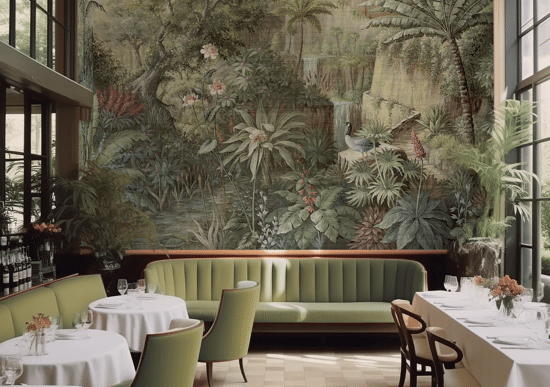
Industry Insights, Design Trends and Disruptive Innovations for Interior Decoration
Debbie McKeegan shares key trends and innovations in the interior decoration industry taking place and demonstrated at recent European exhibitions in Germany and France. The interior decoration industry is adapting to challenges like overstock and supply chain disruptions by integrating digital and traditional methods, aiming for more agile and environmentally friendly solutions.

Bridging Design and Technology: The Story of Western Sensibility an interview with Kathryn Sanders
In this podcast episode, Debbie McKeegan interviews Kathryn Sanders, the CEO & founder of Western Sensibility, a US based company that merges interior design with digital printing technology. They discuss the origins of the business, its innovative services, and the importance of sustainability in the textile industry.
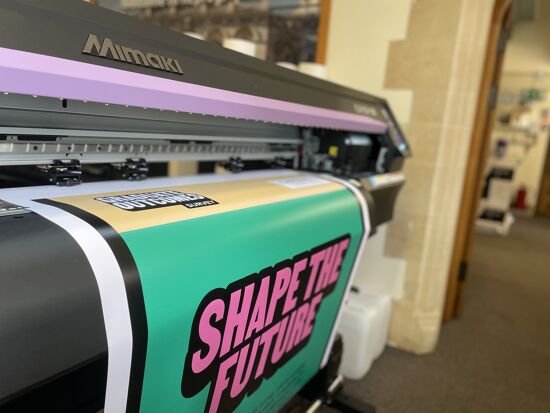
How to choose the right machine for indoor print
With interior print one of the stand-out growth areas of the industry in recent years, it is crucial printing companies select the right equipment to achieve the best quality results. Here, Rob Fletcher picks out some of the machines best suited to this work.
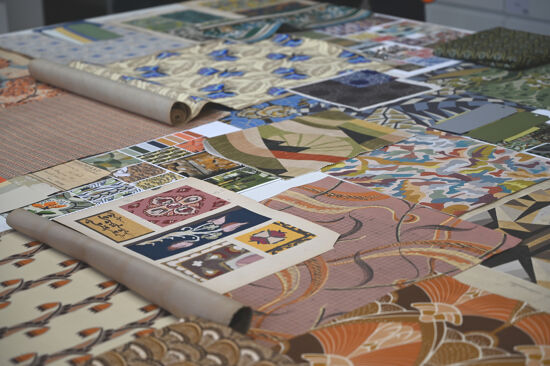
Resilience, Innovation and Heritage: The 100-Year Journey of the Standfast & Barracks
Renowned textile printing facility, Standfast & Barracks celebrates 100 years who are known for their expertise in rotary, flatbed and digital printing techniques. Debbie McKeegan looks at the history of the company and speaks to Lisa Montague, Managing Director about how they have adapted over the years and their future plans.